Virginia Cut Grass
Virginia Cut Grass (Leersia Virginica) is a small flowered white grass, and is smoother than white grass…

Virginia Cut Grass
Virginia Cut Grass (Leersia Virginica) is a small flowered white grass, and is smoother than white grass…
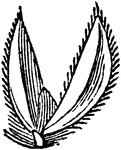
Virginia Cut Grass
Virginia Cut Grass (Leersia Virginica) is a small flowered white grass, and is smoother than white grass…
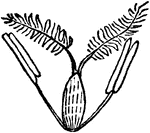
Virginia Cut Grass
Virginia Cut Grass (Leersia Virginica) is a small flowered white grass, and is smoother than white grass…
Virginia Cut Grass
Virginia Cut Grass (Leersia Virginica) is a small flowered white grass, and is smoother than white grass…

Virginia Cut Grass
Indian Rice Grass (Zizania aquatica), also known as Wild Rice, or Water Oats, is found in swampy borders…

Indian Rice Grass
Indian Rice Grass (Zizania aquatica), also known as Wild Rice, or Water Oats, is found in swampy borders…
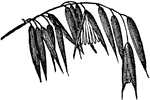
Indian Rice Grass
Indian Rice Grass (Zizania aquatica), also known as Wild Rice, or Water Oats, is found in swampy borders…
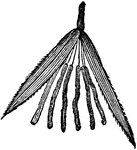
Indian Rice Grass
Indian Rice Grass (Zizania aquatica), also known as Wild Rice, or Water Oats, is found in swampy borders…
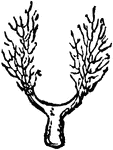
Indian Rice Grass
Indian Rice Grass (Zizania aquatica), also known as Wild Rice, or Water Oats, is found in swampy borders…
Indian Rice Grass
Indian Rice Grass (Zizania aquatica), also known as Wild Rice, or Water Oats, is found in swampy borders…
Indian Rice Grass
Indian Rice Grass (Zizania aquatica), also known as Wild Rice, or Water Oats, is found in swampy borders…
Indian Rice Grass
Indian Rice Grass (Zizania aquatica), also known as Wild Rice, or Water Oats, is found in swampy borders…
Meadow Foxtail Grass
The Meadow Foxtail (Alopecurus pratensis) has an erect, smooth stem, two or three feet high with swelling…

Meadow Foxtail Grass
The Meadow Foxtail (Alopecurus pratensis)has an erect, smooth stem, two or three feet high with swelling…
Slender Foxtail Grass
The Slender Foxtail (Alopecurus agretis) is distinguished from the meadow foxtail by its slender panicle,…

Slender Foxtail Grass
The Slender Foxtail (Alopecurus agretis) is distinguished from the meadow foxtail by its slender panicle,…

Slender Foxtail Grass
The Slender Foxtail is distinguished from the meadow foxtail by its slender panicle, larger spikelets…
Floating Foxtail Grass
The Floating Foxtail (Alopecurus geniculatus) has a stem ascending, bent, and forming knees at the lower…

Floating Foxtail Grass
The Floating Foxtail (Alopecurus geniculatus) has a stem ascending, bent, and forming knees at the lower…
Redtop Grass
The Redtop Grass (Agrostis vulgaris), also known as Burden's Grass, is a perennial grass with smooth,…

Redtop Grass
The Redtop Grass (Agrostis vulgaris), also known as Burden's Grass, is a perennial grass with smooth,…

Sounthern Bent Grass
The Southern Bent Grass (Agrostis dispar) furnished rather course hay, and leads a large produce on…
Sounthern Bent Grass
The Southern Bent Grass (Agrostis dispar) furnished rather course hay, and leads a large produce on…
Beach Grass
Beach Grass (Calamagrostis arenaria or Ammophila arundinacea), also known as Seasand Reed and Mat Grass,…
Black Oat Grass
Black Oat Grass (Stipa avenacea) is found in dry, sandy woods and has no agricultural value. It grows…

Black Oat Grass
Black Oat Grass (Stipa avenacea) is found in dry, sandy woods and has no agricultural value. It grows…

Orchard Grass
Orchard Grass (Dactylis glomerata) also called Rough Cock's-foot, flowers in dense clusters. The stem…

Orchard Grass
Orchard Grass (Dactylis glomerata), also known as Rough Cock's-foot, flowers in dense clusters. The…

Meadow Spear Grass
Meadow Spear Grass (Glyceria nervata), also known as Nerved Manna Grass, has a broad, open panicle,…

Meadow Spear Grass
Meadow Spear Grass (Glyceria nervata), also known as Nerved Manna Grass, has a broad, open panicle,…

Meadow Spear Grass
Meadow Spear Grass (Glyceria nervata), also known as Nerved Manna Grass, has a broad, open panicle,…
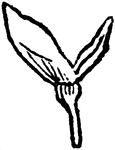
Meadow Spear Grass
Meadow Spear Grass (Glyceria nervata), also known as Nerved Manna Grass, has a broad, open panicle,…
Goose Grass
Goose Grass (Glyceria maritima), also called Creeping Sea Meadow Grass, or Sea Spear Grass, appears…

Goose Grass
Goose Grass appears around salt marshes, growing from six to twelve inches high and having a perennial…

Wood Meadow Grass
Wood Meadow Grass (Poa nemoralis) grows from eighteen inches to two feet high. It has a perennial, creeping…

Wood Meadow Grass
Wood Meadow Grass (Poa nemoralis) grows from eighteen inches to two feet high. It has a perennial, creeping…
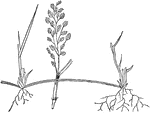
Creeping Meadow Grass
Creeping Meadow Grass (Eragrostis reptans) is found on the gravelly banks of rivers, from New England…
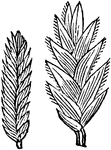
Creeping Meadow Grass
Creeping Meadow Grass (Eragrostis reptans) is found on the gravelly banks of rivers, from New England…

Creeping Meadow Grass
Creeping Meadow Grass (Eragrostis reptans) is found on the gravelly banks of rivers, from New England…

Creeping Meadow Grass
Creeping Meadow Grass (Eragrostis reptans) is found on the gravelly banks of rivers, from New England…

Creeping Meadow Grass
Creeping Meadow Grass (Eragrostis reptans) is found on the gravelly banks of rivers, from New England…

Creeping Meadow Grass
Creeping Meadow Grass (Eragrostis reptans) is found on the gravelly banks of rivers, from New England…
Sheep's Fescue Grass
Sheep's Fescue (Festuca duriuscula) is known by its narrow panicle. It has short, tufted, bristle-shaped…
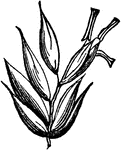
Sheep's Fescue Grass
Sheep's Fescue (Festuca duriuscula) is known by its narrow panicle. It has short, tufted, bristle-shaped…
Red Fescue Grass
The leaves of the Red Fescue (Festuca rubra) are broadish and flat. The root is extremely creeping and…
Red Fescue Grass
The leaves of the Red Fescue (Festuca rubra) are broadish and flat. The root is extremely creeping and…
Meadow Fescue
The panicle of the Meadow Fescue (Festuca pratensis) is nearly erect, branched, close, and somewhat…

Meadow Fescue
The panicle of the Meadow Fescue (Festuca pratensis) is nearly erect, branched, close, and somewhat…
Tall Fescue Grass
Tall Fescue Grass (Festuca elatior) is found commonly in moist meadows. The panicle is contracted, erect,…
Tall Fescue Grass
Tall Fescue Grass (Festuca elatior) is found commonly in moist meadows. The panicle is contracted, erect,…
Chess Grass
The Chess Grass (Bromus secalinus), also called Willard's Bromus, has a spreading, slightly drooping…
Chess Grass
The Chess Grass (Bromus secalinus), also called Willard's Bromus, has a spreading, slightly drooping…

Chess Grass
The Chess Grass (Bromus secalinus), also called Willard's Bromus, has a spreading, slightly drooping…
Chess Grass
The Chess Grass (Bromus secalinus), also called Willard's Bromus, has a spreading, slightly drooping…
Perennial Rye Grass
The Perennial Rye Grass (Lolium perenne) has a smooth, erect stem growing from fifteen inches to two…
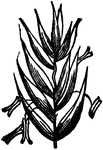
Perennial Rye Grass
The Perennial Rye Grass (Lolium perenne) has a smooth, erect stem growing from fifteen inches to two…
Italian Rye Grass
Italian Rye Grass (Lolium Italicum) differs from the Perennial Rye Grass in the florets having long,…

Italian Rye Grass
Italian Rye Grass (Lolium Italicum) differs from the Perennial Rye Grass in the florets having long,…
Couch Grass
Couch Grass (Triticum repens) is also referred to as Quitch Grass, Twitch Grass, Dog Grass, and Chandler…